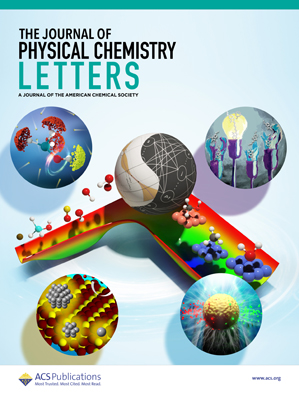Nanoengineered RF-Sputtered Mn3O4 Cathode Thin Films for Aqueous Zinc-Ion Batteries: Insights into Diffusion Dynamics and Application Potential
IF 4.6
2区 化学
Q2 CHEMISTRY, PHYSICAL
引用次数: 0
Abstract
Manganese oxides are a promising cathode material for aqueous zinc-ion batteries (AZIBs), but thin-film configurations remain underexplored. This study investigates the electrochemical dynamics of 60 nm thin Mn3O4 thin films, fabricated via RF magnetron reactive sputtering. It addresses the highest reported capacity (25 mAh/g) in thin film form, stability over 500 cycles, effective performance across varying current rates, surpassing previous studies and challenges such as phase stability, and capacity fading over extended cycling, aiming to enhance uniformity, minimizing diffusion barriers for improved performance. EIS reveals Zn2+ diffusion coefficients of 1.503 × 10–7, 1.336 × 10–16, and 1.947 × 10–20 cm2/s in precycle, charged, and discharged states, respectively, highlighting evolving diffusion dynamics during cycling. Structural instability during discharge leads to a decline in diffusion performance, emphasizing the need for material and interfacial optimizations to enhance stability and mitigate degradation. These findings underscore the critical role of interfacial engineering and structural stability in maintaining high ion diffusion rates and minimizing morphological degradation during cycling. The present study explores the critical role of targeted engineering in unlocking their full potential for lightweight, miniaturized, high-performance microbatteries for energy storage applications.

纳米工程射频溅射锌离子电池的Mn3O4阴极薄膜:扩散动力学和应用潜力的见解
锰氧化物是一种很有前途的水性锌离子电池(azib)正极材料,但其薄膜结构仍未得到充分研究。研究了射频磁控反应溅射法制备的60 nm Mn3O4薄膜的电化学动力学。它解决了薄膜形式的最高容量(25 mAh/g), 500次循环以上的稳定性,在不同电流速率下的有效性能,超越了先前的研究和挑战,例如相稳定性,以及延长循环期间的容量衰减,旨在增强均匀性,最大限度地减少扩散障碍以提高性能。EIS显示Zn2+在预循环、充电和放电状态下的扩散系数分别为1.503 × 10-7、1.336 × 10-16和1.947 × 10-20 cm2/s,突出了循环过程中扩散动力学的演变。放电过程中的结构不稳定导致扩散性能下降,因此需要对材料和界面进行优化,以增强稳定性并减轻降解。这些发现强调了界面工程和结构稳定性在维持高离子扩散速率和最小化循环过程中形态退化方面的关键作用。本研究探讨了目标工程在释放其用于储能应用的轻量化、小型化、高性能微电池的全部潜力方面的关键作用。
本文章由计算机程序翻译,如有差异,请以英文原文为准。
求助全文
约1分钟内获得全文
求助全文
来源期刊

The Journal of Physical Chemistry Letters
CHEMISTRY, PHYSICAL-NANOSCIENCE & NANOTECHNOLOGY
CiteScore
9.60
自引率
7.00%
发文量
1519
审稿时长
1.6 months
期刊介绍:
The Journal of Physical Chemistry (JPC) Letters is devoted to reporting new and original experimental and theoretical basic research of interest to physical chemists, biophysical chemists, chemical physicists, physicists, material scientists, and engineers. An important criterion for acceptance is that the paper reports a significant scientific advance and/or physical insight such that rapid publication is essential. Two issues of JPC Letters are published each month.
 求助内容:
求助内容: 应助结果提醒方式:
应助结果提醒方式:


